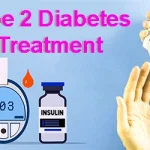Risk of breast cancer
Risk of breast cancer in women: The risk of breast cancer in women can vary widely based on several factors. While any woman can develop breast cancer, certain risk factors can increase the likelihood.
Breast cancer that originates in the ducts is referred to as invasive ductal carcinoma. Additionally, breast cancer can begin in the cells of the milk-producing glands, known as lobules.
When cancer develops in the lobules, it is termed invasive lobular carcinoma. While it is less common, other types of cells within the breast can also transform into cancer cells.
Risk factors
Women’s breast cancer risk can vary widely based on several factors. Although any woman can develop breast cancer, certain risk factors can increase the chances.
Major Risk Factors for Breast Cancer in Women
Here are the primary factors that can affect a woman’s risk of breast cancer:
1. Age
Increasing age is one of the most significant risk factors. The risk of breast cancer rises as women get older, with most diagnoses occurring in women over 50.
2. Genetic Mutations
BRCA1 and BRCA2 mutations: These genetic mutations can be inherited and are known to significantly increase the risk of breast and ovarian cancer.
Women with these mutations may have a risk as high as 45-70% for developing breast cancer by age 70.
3. Family History of Breast or Ovarian Cancer
Women with close relatives (like a mother, sister, or daughter) who have had breast or ovarian cancer have a higher risk.
The risk increases further if multiple family members on either the mother’s or father’s side have had these cancers.
4. Personal History of Breast Cancer or Certain Non-Cancerous Breast Conditions
Women who have had breast cancer previously are at a higher risk of developing it again, either in the same or the other breast.
Some benign (non-cancerous) breast conditions, like atypical hyperplasia, also increase the risk.
5. Reproductive and Menstrual History
Early menstruation (before age 12) or late menopause (after age 55): Longer lifetime exposure to estrogen increases breast cancer risk.
Late or no pregnancy: Women who have their first child after 30 or never have children are at slightly higher risk.
Lack of breastfeeding: Some studies suggest that breastfeeding, especially for over a year, may reduce the risk.
6. Hormone Replacement Therapy (HRT)
Combined estrogen and progesterone therapy: Postmenopausal hormone therapy, especially when both hormones are used, increases the risk if taken over several years.
Birth control pills: Some studies have shown a slight increase in risk while using hormonal contraceptives, although the risk tends to return to normal once they are stopped.
7. Lifestyle Factors
Alcohol consumption: Drinking alcohol regularly has been linked to an increased risk of breast cancer. The risk increases with the amount consumed.
Obesity and overweight: Excess weight, particularly after menopause, is associated with a higher risk because fat tissue produces estrogen, which can fuel certain types of breast cancer.
Physical inactivity: Lack of regular exercise can increase the risk of breast cancer, while physical activity is believed to have a protective effect.

8. Dense Breast Tissue
Women with high breast density (a larger amount of glandular and fibrous tissue than fatty tissue) have a higher risk. Dense tissue can also make tumors harder to detect on mammograms.
9. Radiation Exposure
Previous radiation therapy: Women who received radiation treatments to the chest area (such as for lymphoma) before age 30 have an increased risk.
Other Potentially Modifiable Factors
Some studies suggest that limiting exposure to certain environmental chemicals, avoiding smoking, and maintaining a balanced diet may also contribute to lower risk, though more research is needed to confirm these links.
Ways to Lower Risk
Although many risk factors are beyond control (like genetics and age), others can be modified. Here are some steps that may help reduce risk:
- Maintain a healthy weight and exercise regularly.
- Limit alcohol intake.
- Consider breastfeeding if possible.
- Avoid prolonged use of combined hormone replacement therapy.
- Get regular screenings (mammograms) for early detection.
Understanding these risk factors can help women make informed decisions about lifestyle choices, screening practices, and even genetic testing if a family history is present.
Prevention
Making adjustments to your everyday routine may help reduce your risk of breast cancer. Consider the following:
Inquire about breast cancer screenings. Discuss with your doctor or healthcare provider when you should start undergoing breast cancer screenings. Ask about the potential advantages and disadvantages of these screenings. Together, you can determine which breast cancer screening tests are most appropriate for you.
Familiarize yourself with your breasts through self-exams for breast awareness. You might choose to get to know your breasts by periodically checking them during a self-exam. If you notice any new changes, a lump, or anything unusual in your breasts, inform a healthcare professional promptly.
While breast awareness does not prevent breast cancer, it can enhance your understanding of how your breasts look and feel. This may increase your chances of noticing any changes.
Consume alcohol sparingly, if at all. If you choose to drink, limit your intake to a maximum of one drink per day. For those concerned about preventing breast cancer, there is no amount of alcohol that is considered safe, so you may opt not to drink at all.
Exercise regularly, If you haven’t been exercising for a while, consult a healthcare professional to ensure it’s safe for you to begin and start gradually.
Minimize the use of menopausal hormone therapy. Combining hormone therapy may heighten the risk of breast cancer, so discuss the advantages and disadvantages of such treatment with a healthcare provider.
Some individuals may experience uncomfortable symptoms during menopause, and those people might find that the potential risks of hormone therapy are worthwhile for relief. To lessen the chance of breast cancer, use the lowest effective dose of hormone therapy for the shortest duration necessary.
Stay at a healthy weight. If you are at a healthy weight, make an effort to maintain it. If you need to shed pounds, speak with a healthcare professional about safe methods for weight loss. Reduce your calorie intake and gradually increase your level of physical activity.
High risk of breast cancer
If you are at an elevated risk for breast cancer, you may want to explore additional methods to reduce this risk. A heightened risk may be indicated by having a family history of breast cancer.
Additionally, a personal history of precancerous cells in breast tissue may contribute to an increased risk. It’s important to discuss your risk with your healthcare team. They may provide options for risk reduction, including:
Preventive medications. Taking estrogen-blocking medications can help diminish the risk of breast cancer for individuals at high risk. Options may include selective estrogen receptor modulators and aromatase inhibitors, which are also utilized in hormone therapy for breast cancer.
These medications have potential side effects. For this reason, they are generally prescribed only to those with a very high risk of breast cancer. Be sure to discuss the potential benefits and risks with your healthcare team.
Preventive surgery. For individuals who possess a very high risk for breast cancer, surgical options might be worth considering to lower this risk. One possibility is a prophylactic mastectomy, which involves the removal of the breasts.
Another option could be a prophylactic oophorectomy, the removal of the ovaries, which reduces the likelihood of both breast and ovarian cancer.
Conclusion
Risk of breast cancer in women: Here we discuss the risk of breast cancer in women and its symptoms. Hope you can get details from here. Here is also an idea about the immune system. And discussed in detail about high risk jobs. We hope you will benefit from this article.





